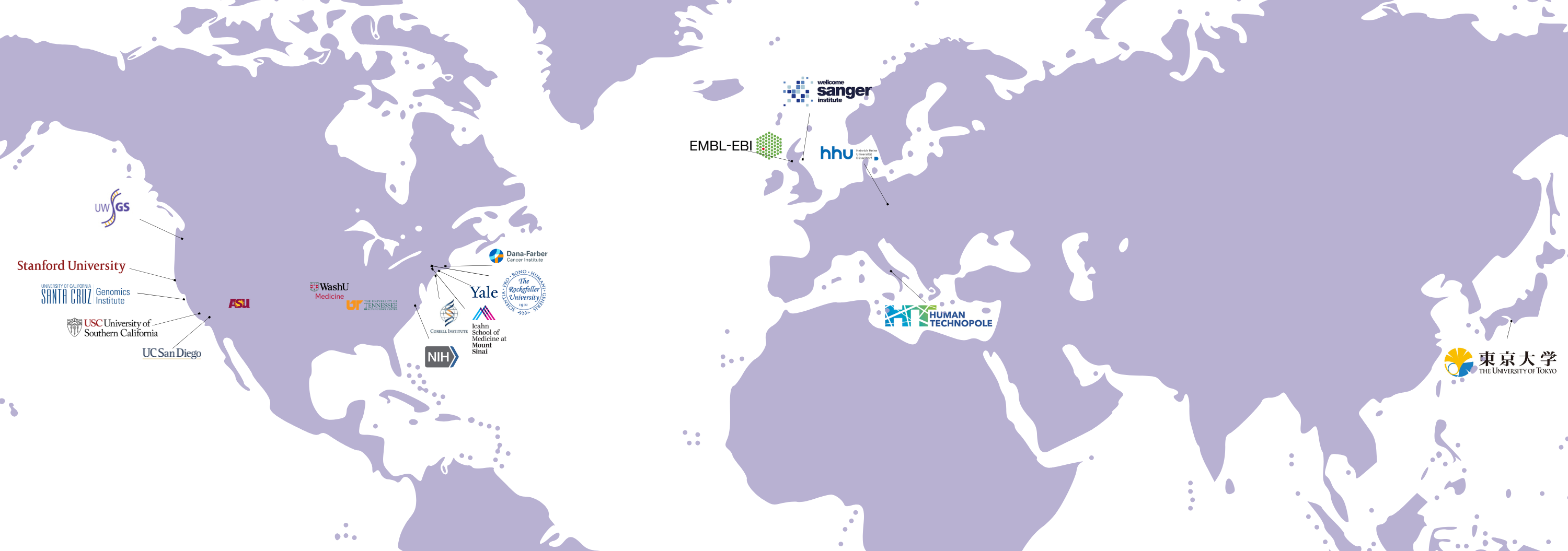Human Pangenome Reference Consortium

The Human Pangenome Reference Consortium (HPRC) is an NIH-funded project that aims to engage scientists and bioethicists in creating a human pangenome reference and resource that represents global human genomic variation. In the process of creating the pangenome, the HPRC is developing improved technology for genome assembly and a next-generation tool ecosystem that leverages the pangenome for comprehensive analyses.
What’s new?
- May 12, 2025: Announcing the Human Pangenome Reference Consortium Data Release 2. Read more
We Need More Than One Human Reference Genome
The human reference genome has served as the foundational resource for human genetics for the past 20 years, providing a centralized coordinate system that has been integral for genomic data sharing and analyses. However, the GRCh38 linear reference is an incomplete, mosaic assembly composed of data from over 20 individuals, with a single individual representing around 70% of the sequence. This creates a “reference bias” in analyses, reducing the accuracy of downstream variant discovery, disease association studies, and reference-based mapping.
The HPRC is building a pangenome reference resource that addresses these deficiencies by providing a collection of validated, telomere-to-telomere assembled genomes, annotations, and alignments that better represent human genomic variation.
Follow us on Bluesky
Collaboration Map
